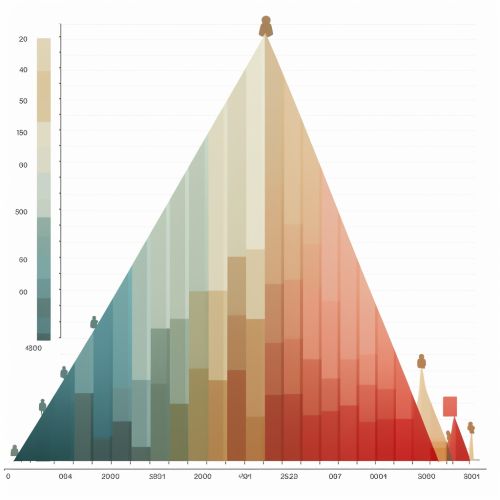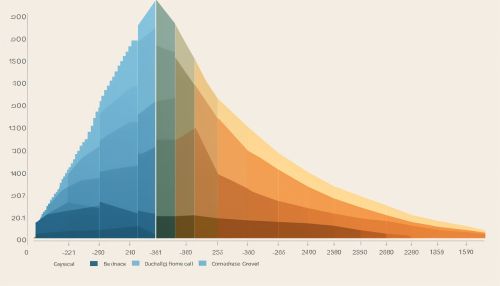Population pyramid
Introduction
A population pyramid is a graphical representation of the age-sex composition of a population. It is a tool used by demographers, sociologists, and geographers to study the demographic characteristics of a particular region or country. The pyramid provides a clear visual depiction of the population's age and sex structure, which can be used to understand the social and economic challenges a society might face.
Structure of a Population Pyramid
A population pyramid, also known as an age-sex pyramid, is a dual-sided horizontal bar graph. The left side of the pyramid represents the male population, while the right side represents the female population. Each bar on the graph represents a specific age group, typically in five-year intervals, with the youngest age group at the bottom and the oldest at the top. The length of each bar corresponds to the proportion of the population in that age group.
Types of Population Pyramids
There are three primary types of population pyramids: expansive, stationary, and constrictive. Each type provides insight into the demographic trends and future growth of a population.
Expansive Population Pyramid
An expansive population pyramid is characterized by a broad base and a narrow top, indicating high birth rates and high death rates, respectively. This type of pyramid is typically seen in developing countries where access to healthcare and family planning services may be limited.
Stationary Population Pyramid
A stationary population pyramid is characterized by a rectangular shape, indicating stable or low birth and death rates. This type of pyramid is typically seen in developed countries with strong healthcare systems and widespread use of family planning services.
Constrictive Population Pyramid
A constrictive population pyramid is characterized by a narrow base and a broad top, indicating low birth rates and low death rates. This type of pyramid is typically seen in highly developed countries with low fertility rates and long life expectancy.
Factors Influencing the Shape of a Population Pyramid
Several factors can influence the shape of a population pyramid, including fertility rates, mortality rates, and migration patterns.
Fertility Rates
Fertility rates directly influence the base of the population pyramid. High fertility rates result in a broader base, indicating a larger proportion of young people. Conversely, low fertility rates result in a narrower base, indicating a smaller proportion of young people.
Mortality Rates
Mortality rates directly influence the top of the population pyramid. High mortality rates result in a narrower top, indicating a smaller proportion of older people. Conversely, low mortality rates result in a broader top, indicating a larger proportion of older people.
Migration Patterns
Migration patterns can also influence the shape of a population pyramid. Inward migration can increase the size of certain age groups, while outward migration can decrease the size of certain age groups.


Implications of Population Pyramids
Population pyramids can have significant implications for social and economic policy. For example, a population pyramid with a broad base suggests a large number of young people who will need access to education and job opportunities. Conversely, a population pyramid with a broad top suggests a large number of older people who will need access to healthcare and social security benefits.
Conclusion
In conclusion, population pyramids are a powerful tool for understanding the demographic structure of a population. They provide insights into the age and sex distribution of a population, which can be used to anticipate social and economic challenges and inform policy decisions.
